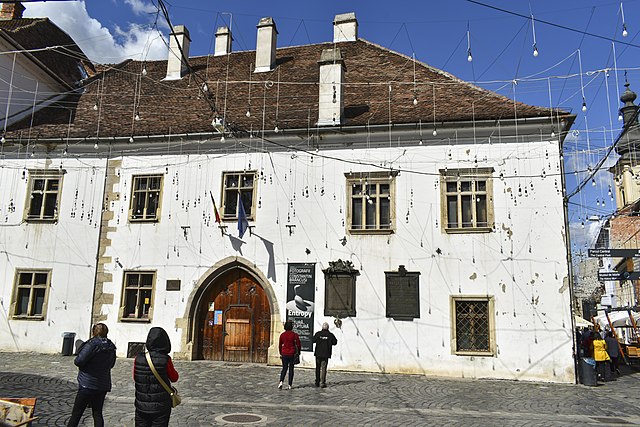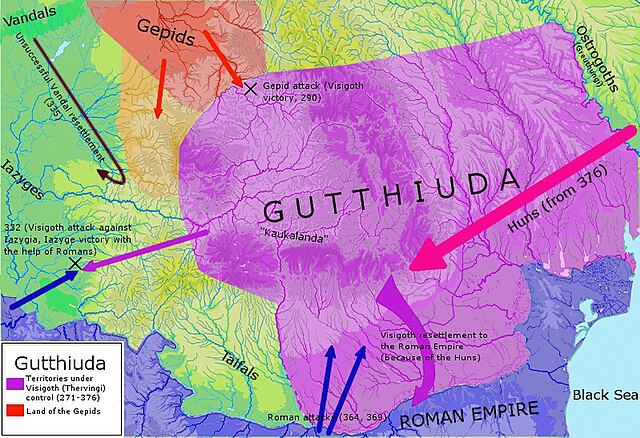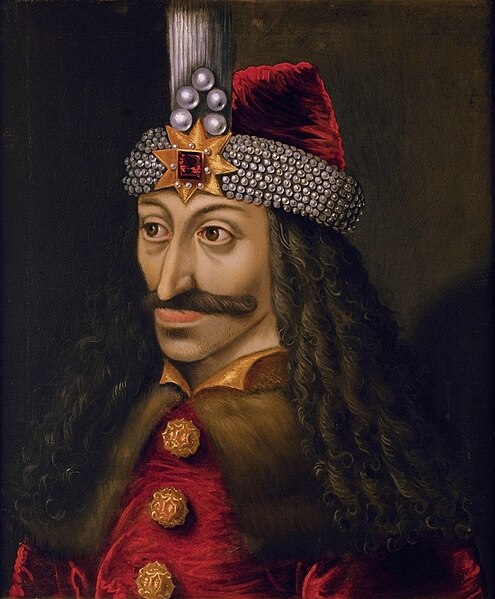Cluj-Napoca, or simply Cluj, is the second-most populous city in Romania and the seat of Cluj County in the northwestern part of the country. Geographically, it is roughly equidistant from Bucharest, Budapest and Belgrade. Located in the Someșul Mic river valley, the city is considered the unofficial capital of the historical province of Transylvania. For some decades prior to the Austro-Hungarian Compromise of 1867, it was the official capital of the Grand Principality of Transylvania.
Image: Romania 2382 View from Hotel (7794313314)
Image: Biserica Sfântul Mihail
Image: Turn Catedrala Ortodoxa Cluj Napoca
Image: Casa Matei
Romania is a country located at the crossroads of Central, Eastern and Southeastern Europe. It borders Ukraine to the north and east, Hungary to the west, Serbia to the southwest, Bulgaria to the south, Moldova to the east, and the Black Sea to the southeast. It has a predominantly continental climate, and an area of 238,397 km2 (92,046 sq mi) with a population of 19 million people (2023). Romania is the twelfth-largest country in Europe and the sixth-most populous member state of the European Union. Its capital and largest city is Bucharest, followed by Cluj-Napoca, Iași, Timișoara, Constanța, Craiova, Brașov, and Galați.
Three Chalcolithic ceramic vessels (from left to right): a bowl on stand, a vessel on stand and an amphora, ca. 4300–4000 BC; from Scânteia, Romania and displayed at the Moldavia National Museum Complex
Ruins of sanctuaries at Sarmizegetusa Regia (Dacia's capital during the reigns of Burebista and Decebalus)
Gutthiuda, or the land of the Gothic-speaking Thervingi, and the neighbouring tribes (370s AD)
Vlad III of Wallachia (also known as Vlad the Impaler), medieval ruler of Wallachia








